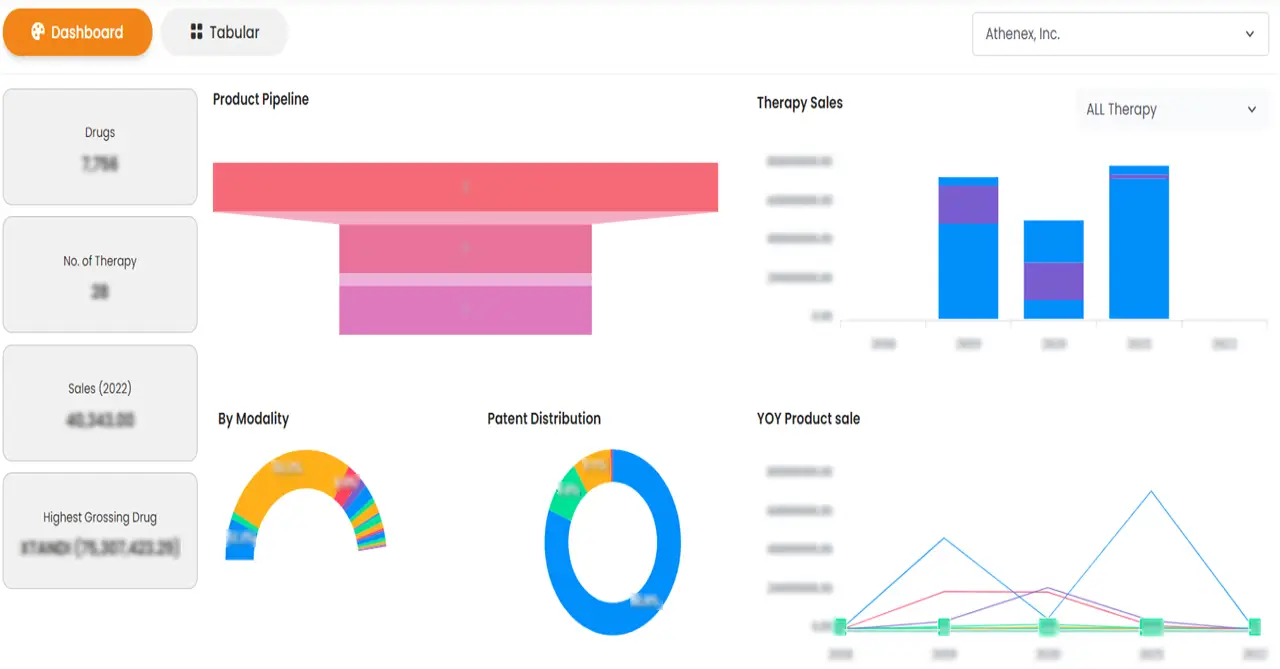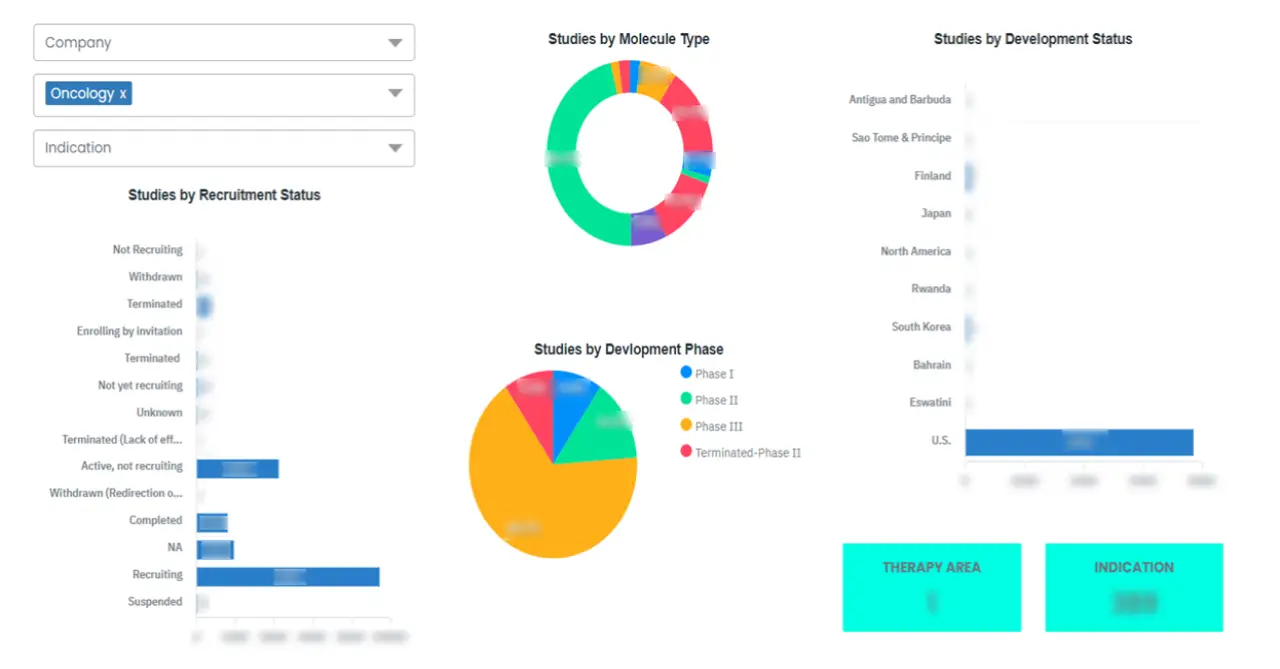Global Multiple Hereditary Exostosis Market Size, Share, and Trends Analysis Report
Market Size in USD Billion
CAGR :
% 
 USD
125.53 Million
USD
167.88 Million
2024
2032
USD
125.53 Million
USD
167.88 Million
2024
2032
| 2025 –2032 | |
| USD 125.53 Million | |
| USD 167.88 Million | |
|
|
|
Global Multiple Hereditary Exostosis Market Segmentation, By Type (Sessile and Pedunculated), Treatment (Surgery, Medication, and Others), Diagnosis (X-ray, Computed Tomography (CT) Scan, Magnetic Resonance Imaging (MRI), Genetic Tests, and Others), Site (Legs, Arms, Shoulders, Pelvis, Fingers, and Toes), Age Group (Pediatric and Adult), End User (Hospitals, Specialty Clinics, Ambulatory Surgical Centers, and Others) - Industry Trends and Forecast to 2032.
Global Multiple Hereditary Exostosis Market Analysis
MHE is a rare genetic disorder characterized by multiple benign bone tumors (osteochondromas), leading to deformities, pain, and restricted mobility in severe cases. Growing awareness of MHE and hereditary conditions is expected to act as a driver for market growth. Although, advanced therapies like palovarotene are associated with significant annual costs, rendering effective treatment inaccessible for many patients, especially those lacking sufficient insurance coverage. This is expected to act as a restraint on market growth.
Global Multiple Hereditary Exostosis Market Size
Global Multiple Hereditary Exostosis Market size was valued at USD 125.53 million in 2024 and is projected to reach USD 167.88 million by 2032, with a CAGR of 3.70% during the forecast period of 2025 to 2032.
Report Scope and Market Segmentation
|
Attributes |
Multiple Hereditary Exostosis Key Market Insights |
|
Segmentation |
|
|
Countries Covered |
U.S., Canada, and Mexico, Germany, U.K., France, Italy, Spain, Russia, Turkey, Switzerland, Belgium, Netherland, Denmark, Sweden, Poland, Norway, Finland, and Rest of Europe, Japan, China, South Korea, India, Singapore, Thailand, Indonesia, Malaysia, Philippines, Taiwan, Vietnam, New Zealand, Australia, and Rest of Asia-Pacific, Brazil, Argentina, and Rest of South America, South Africa, Egypt, Saudi Arabia, Kuwait, Qatar, Oman, Bahrain, U.A.E., and Rest of Middle East and Africa |
|
Key Market Players |
Bayer AG (Germany), Haleon Group of Companies (UK), BASF (Germany), Viatris Inc. (U.S.), Mallinckrodt (U.S.), AdvaCare Pharma (U.S.), Aurobindo Pharma (India), Taj Pharmaceutical Limited (India), Wellona Pharma (India), and ActizaPharma (India) among others |
|
Market Opportunities |
|
|
Value Added Data Infosets |
In addition to the insights on market scenarios such as market value, growth rate, segmentation, geographical coverage, and major players, the market reports curated by the Data Bridge Market Research also include depth expert analysis, patient epidemiology, pipeline analysis, pricing analysis, and regulatory framework. |
Multiple Hereditary Exostosis Market Trends
“Increasing Awareness and Advancements in Genetic Research”
The global Multiple Hereditary Exostosis (MHE) market is witnessing a significant trend towards increasing awareness and advancements in genetic research related to the condition. As healthcare professionals and patients become more informed about MHE, there is a growing demand for accurate diagnosis and effective treatment options. Scientific developments in genetic testing and molecular biology are enhancing the understanding of the underlying mechanisms of MHE, leading to personalized medicine approaches. Moreover, enhanced educational initiatives and patient advocacy efforts are contributing to the proliferation of knowledge regarding MHE, thus encouraging more individuals to seek medical advice. This shift not only drives the demand for specialized healthcare services but also fuels the growth of the pharmaceutical sector, with companies exploring innovative therapies and interventions aimed at managing MHE more effectively. Overall, the convergence of awareness, education, and research is poised to shape the landscape of the MHE market significantly in the coming years.
Multiple Hereditary Exostosis Market Definition
Multiple Hereditary Exostosis (MHE), also known as Hereditary Multiple Exostoses (HME), is a genetic disorder characterized by the development of multiple benign bone tumors called exostoses or osteochondromas. These typically arise from the growth of cartilage at the ends of long bones and can occur at various sites throughout the body. MHE is usually inherited in an autosomal dominant pattern; meaning only one copy of the mutated gene is needed for the condition to manifest. Individuals with MHE may experience pain, complications from the exostoses such as deformities or restricted motion, and an increased risk of developing osteosarcoma, a type of bone cancer.
Multiple Hereditary Exostosis Market Dynamics
Drivers
- Rising Prevalence of Genetic Disorders
MHE is a rare genetic disorder characterized by the development of multiple benign bone tumors (osteochondromas) that can lead to physical deformities, pain, and, in severe cases, restricted mobility. As awareness about MHE and other hereditary conditions increases, the need for effective diagnosis and therapeutic interventions has surged.
For instance,
- In December 2019, according to an article published by National Institutes of Health, the prevalence of HME (Hereditary Multiple Exostoses) in Western populations is estimated to range between 0.4 to 1 per 50,000 individuals. However, among the Chamorro people of Guam, the prevalence is significantly higher, reaching 50 per 50,000. In Western countries, the incidence of this condition is reported to increase by 1.5% annually. This rising prevalence of genetic disorders, such as HME, highlights the growing need for effective treatments, which will drive the global multiple hereditary exostosis market as healthcare systems prioritize diagnosis and management of such conditions.
With advancements in genetic screening and diagnostics, early detection of MHE is becoming more feasible, which allows for timely intervention and improved patient outcomes. Genetic testing has become a vital tool in identifying carriers and at-risk individuals, enabling personalized treatment plans and targeted therapies. The demand for such diagnostic technologies is growing as more healthcare providers recognize the importance of early diagnosis in managing genetic disorders like MHE.
- Growing Pediatric Population
Multiple Hereditary Exostosis (MHE) predominantly affects children, typically presenting symptoms during early childhood or adolescence. As the global pediatric population grows, there is an increased likelihood of more cases being diagnosed, which directly fuels the demand for early diagnosis and effective treatment options. MHE can cause bone deformities, restricted movement, and complications that significantly impact a child's growth and quality of life, making timely intervention essential.
For instance,
- In May 2023, according to an article published by ScienceDirect, India's expanding pediatric population, coupled with increasing affordability, emphasizes the urgent need for improved healthcare services. Although children aged 0 to 18 make up 39% of the population, the highest percentage globally, healthcare infrastructure remains a critical focus. The substantial pediatric demographic in India highlights the need for specialized healthcare solutions, driving the global multiple hereditary exostosis market as demand for pediatric genetic disorder diagnosis and treatment rises in this large and growing population.
The expanding pediatric population, particularly in developing regions, has led to a higher focus on pediatric healthcare infrastructure. Governments and healthcare organizations are recognizing the need to strengthen genetic screening programs and offer specialized pediatric care. As more children are diagnosed with MHE, the demand for genetic testing, regular monitoring, and surgical interventions to manage the disorder is rising. This creates a steady need for advanced diagnostic tools and therapeutic options tailored specifically for children.
Opportunities
- Increase in Patient Care and Support Systems
患者ケアおよびサポート システムの増加により、世界の多発性遺伝性骨腫市場は大きく変化しています。世界中の医療システムが患者中心のケアを重視しているため、カスタマイズされた治療と包括的なサポートの需要が急増しています。この傾向は、多発性の良性骨腫瘍の形成を特徴とする遺伝性疾患である MHE に特に関連しています。
技術の進歩と遠隔医療の台頭により、患者サポート システムはよりアクセスしやすく、効率的になっています。デジタル プラットフォームにより、患者は医療専門家とつながり、経験を共有し、貴重なリソースにアクセスすることができます。これらの開発により、MHE 症状の管理が改善され、早期介入が促進され、合併症を軽減できます。患者がより多くの情報を得て力を得るようになると、革新的な治療法や管理オプションの需要が高まる可能性が高く、 製薬会社 やバイオテクノロジー会社が MHE 市場で製品提供を拡大する機会が生まれます。
- コラボレーションとパートナーシップの増加
製薬会社、研究機関、医療機器メーカー間の提携や協力の急増は、世界の多発性遺伝性骨腫市場にとって大きなチャンスとなります。これらの提携により、知識の共有、専門知識の交換、リソースのプールが促進され、新しい治療法や療法の開発が促進され、MHE 患者の満たされていないニーズに対応できるようになります。
企業は、戦略的パートナーシップを通じて、既存の技術と治療法を組み合わせて革新的なソリューションを生み出すことができます。パートナーシップとコラボレーションの増加は、MHE 研究への投資を促進し、ひいては市場の革新と成長を促進する可能性があります。製薬会社と医療機器メーカーが他の組織と協力して MHE 患者のニーズに対応するにつれて、研究開発への投資が増加し、MHE の根本的な原因の理解が深まり、より効果的な治療法が開発されることが期待されます。
制約/課題
- 先進治療の高額な費用
「高度な治療の高額な費用」は、治療へのアクセスと医療制度に多面的な影響を及ぼすため、世界の多発性遺伝性骨腫 (MHE) 市場に大きな制約をもたらします。パロバロテンなどの高度な治療には、かなりの年間費用がかかるため、特に十分な保険に加入していない人など、多くの人々にとって効果的な治療が受けられません。「診断」のセクションで概説されているように、MRI や CT スキャンなどの高価な診断ツールへの依存は、経済的負担を増大させ、タイムリーな治療を妨げ、健康状態の悪化につながる可能性があります。
例えば、
- 2023年8月にNCBIが発表した記事によると、パロバロテンの年間費用は、8歳から14歳の患者の場合約622,373米ドル、14歳以上の患者の場合1,022,894米ドルと推定されています。この高度な治療法の高額な費用は、特に十分な保険適用を受けていない患者や医療資金が限られている地域の患者にとって、大きな経済的負担が治療へのアクセスを制限するため、世界の多発性遺伝性骨腫市場にとって大きな制約となっています。
治療法の制限
有効な治療法が限られていることが、多発性遺伝性骨腫の世界市場の成長に対する大きな制約となっています。研究の進歩とパロバロテンなどの新薬の期待にもかかわらず、MHE の現在の治療環境はまだ未開発です。パロバロテンは有望な治療薬ではありますが、まだすべての地域で広く利用可能または承認されているわけではなく、より広範な患者層へのアクセスが制限されています。
さらに、MHE の根本的な原因を標的とした薬はほとんどなく、現在利用可能な治療法のほとんどは、イブプロフェンなどの薬による鎮痛や骨軟骨腫を除去する外科的介入など、症状の管理に重点を置いています。しかし、これらの治療法は病気の遺伝的基礎に対処するものではなく、患者にとって長期的な疾患修飾療法の選択肢は限られています。
例えば、
- 2019年12月に米国国立衛生研究所が発表した論文によると、現在利用できる治療選択肢は切除、四肢短縮、外科的変形矯正のみであり、主に症状がある場合や悪性転化の疑いがある場合に推奨されています。
この市場レポートでは、最近の新しい開発、貿易規制、輸出入分析、生産分析、バリュー チェーンの最適化、市場シェア、国内および現地の市場プレーヤーの影響、新たな収益源の観点から見た機会の分析、市場規制の変更、戦略的市場成長分析、市場規模、カテゴリ市場の成長、アプリケーションのニッチと優位性、製品の承認、製品の発売、地理的拡大、市場における技術革新などの詳細が提供されます。市場に関する詳細情報を取得するには、アナリスト ブリーフについて Data Bridge Market Research にお問い合わせください。当社のチームが、情報に基づいた市場決定を行い、市場の成長を実現できるようお手伝いします。
多発性遺伝性骨腫の市場範囲
市場は、タイプ、治療、診断、場所、年齢層、およびエンドユーザーに基づいてセグメント化されています。これらのセグメントの成長は、業界のわずかな成長セグメントを分析するのに役立ち、ユーザーに貴重な市場の概要と市場の洞察を提供し、コア市場アプリケーションを特定するための戦略的決定を下すのに役立ちます。
タイプ
- 無柄な
- 有柄
処理
- 手術
- 腫瘍を除去する
- 手足を長くする
- 薬
- 病院薬局
- ドラッグストアと薬局
- オンライン薬局
- その他
診断
- X線
- 無柄な
- 有柄
- コンピュータ断層撮影(CT)スキャン
- 無柄な
- 有柄
- 磁気共鳴画像(MRI)
- 無柄な
- 有柄
- 遺伝子検査
- 無柄な
- 有柄
- その他
- 無柄な
- 有柄
サイト
- 脚
- 武器
- 肩
- 骨盤
- 指
- つま先
年齢層
- 小児科
- アダルト
エンドユーザー
- 病院
- プライベート
- 政府
- 専門クリニック
- 外来手術センター
- その他
多発性遺伝性骨腫市場の地域分析
市場は分析され、市場規模の洞察と傾向は、上記のように国、タイプ、治療、診断、場所、年齢層、エンドユーザー別に提供されます。
市場がカバーする国は、米国、カナダ、メキシコ、ドイツ、英国、フランス、イタリア、スペイン、ロシア、トルコ、スイス、ベルギー、オランダ、デンマーク、スウェーデン、ポーランド、ノルウェー、フィンランド、その他のヨーロッパ諸国、日本、中国、韓国、インド、シンガポール、タイ、インドネシア、マレーシア、フィリピン、台湾、ベトナム、ニュージーランド、オーストラリア、その他のアジア太平洋諸国、ブラジル、アルゼンチン、その他の南米諸国、南アフリカ、エジプト、サウジアラビア、クウェート、カタール、オマーン、バーレーン、UAE、その他の中東およびアフリカ諸国です。
北米は、先進的な医療インフラ、高い認知度、遺伝性疾患に対する強力な研究資金により、市場を独占すると予想されています。さらに、主要な製薬会社の存在と革新的な治療オプションが、この地域の市場成長をさらに促進します。
アジア太平洋地域は、人口意識の高まり、医療費の増加、遺伝子研究と治療への重点の増加により、最も急速に成長する地域になると予想されています。さらに、新興経済国における高度な医療技術と治療法へのアクセスの改善も、市場の急速な拡大に貢献しています。
レポートの国別セクションでは、市場の現在および将来の傾向に影響を与える国内市場における個別の市場影響要因と規制の変更も提供しています。下流および上流のバリュー チェーン分析、技術動向、ポーターの 5 つの力の分析、ケース スタディなどのデータ ポイントは、個々の国の市場シナリオを予測するために使用される指標の一部です。また、国別データの予測分析を提供する際には、グローバル ブランドの存在と可用性、および地元および国内ブランドとの競争が激しいか少ないために直面する課題、国内関税と貿易ルートの影響も考慮されます。
多発性遺伝性骨腫の市場シェア
市場競争環境では、競合他社ごとの詳細が提供されます。詳細には、会社概要、会社の財務状況、収益、市場の可能性、研究開発への投資、新しい市場への取り組み、世界的なプレゼンス、生産拠点と施設、生産能力、会社の強みと弱み、製品の発売、製品の幅と広さ、アプリケーションの優位性などが含まれます。提供される上記のデータ ポイントは、市場に関連する会社の焦点にのみ関連しています。
多発性遺伝性骨腫市場で活動するマーケットリーダーは次のとおりです。
- バイエルAG(ドイツ)
- ハレオングループ(英国)
- BASF(ドイツ)
- Viatris Inc. (U.S.)
- Mallinckrodt (U.S.)
- AdvaCare Pharma (U.S.)
- Aurobindo Pharma (India)
- Taj Pharmaceutical Limited (India)
- Wellona Pharma (India)
- ActizaPharma (India)
- Lqms Software Solutions (USA)
- Starlims Corporation (A Subsidiary Of Abbott) (USA)
Latest Developments in Global Multiple Hereditary Exostosis Market
- In January 2023, Ipsen entered into acquisition of Albireo, enhancing its rare disease portfolio with Bylvay (odevixibat), the first approved treatment for progressive familial intrahepatic cholestasis. This strategic move aims to accelerate growth in rare pediatric liver diseases, bolstering Ipsen’s market presence and expanding treatment options for underserved patients.
SKU-
世界初のマーケットインテリジェンスクラウドに関するレポートにオンラインでアクセスする
- インタラクティブなデータ分析ダッシュボード
- 成長の可能性が高い機会のための企業分析ダッシュボード
- カスタマイズとクエリのためのリサーチアナリストアクセス
- インタラクティブなダッシュボードによる競合分析
- 最新ニュース、更新情報、トレンド分析
- 包括的な競合追跡のためのベンチマーク分析のパワーを活用
調査方法
データ収集と基準年分析は、大規模なサンプル サイズのデータ収集モジュールを使用して行われます。この段階では、さまざまなソースと戦略を通じて市場情報または関連データを取得します。過去に取得したすべてのデータを事前に調査および計画することも含まれます。また、さまざまな情報ソース間で見られる情報の不一致の調査も含まれます。市場データは、市場統計モデルと一貫性モデルを使用して分析および推定されます。また、市場シェア分析と主要トレンド分析は、市場レポートの主要な成功要因です。詳細については、アナリストへの電話をリクエストするか、お問い合わせをドロップダウンしてください。
DBMR 調査チームが使用する主要な調査方法は、データ マイニング、データ変数が市場に与える影響の分析、および一次 (業界の専門家) 検証を含むデータ三角測量です。データ モデルには、ベンダー ポジショニング グリッド、市場タイムライン分析、市場概要とガイド、企業ポジショニング グリッド、特許分析、価格分析、企業市場シェア分析、測定基準、グローバルと地域、ベンダー シェア分析が含まれます。調査方法について詳しくは、お問い合わせフォームから当社の業界専門家にご相談ください。
カスタマイズ可能
Data Bridge Market Research は、高度な形成的調査のリーダーです。当社は、既存および新規のお客様に、お客様の目標に合致し、それに適したデータと分析を提供することに誇りを持っています。レポートは、対象ブランドの価格動向分析、追加国の市場理解 (国のリストをお問い合わせください)、臨床試験結果データ、文献レビュー、リファービッシュ市場および製品ベース分析を含めるようにカスタマイズできます。対象競合他社の市場分析は、技術ベースの分析から市場ポートフォリオ戦略まで分析できます。必要な競合他社のデータを、必要な形式とデータ スタイルでいくつでも追加できます。当社のアナリスト チームは、粗い生の Excel ファイル ピボット テーブル (ファクト ブック) でデータを提供したり、レポートで利用可能なデータ セットからプレゼンテーションを作成するお手伝いをしたりすることもできます。















